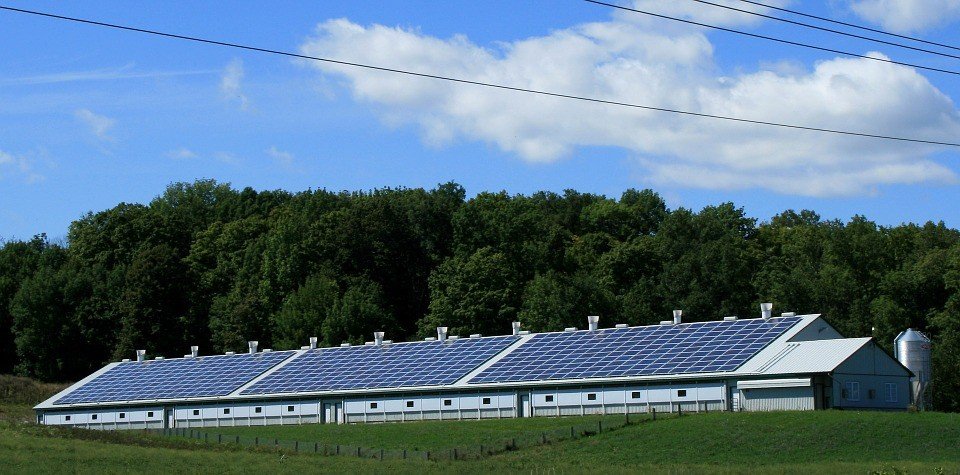Business
When should businesses and organizations opt for an ESCO?
An energy service company (ESCO) aims to provide your business with energy-saving solutions like retrofitting, energy conservation and generation.

To ESCO or not to ESCO—that is the question. For the management of organizations, energy service companies (ESCOs) can seem an appealing solution, but there are pitfalls, which we explore in this article. The bottom line is this: it may be valid to think that your organization does not have—or cannot afford the expertise to manage—an energy retrofit, so it may seem appealing to farm it out. At one level, this is a purely strategic consideration; contracting it out may seem preferable as opposed to being diverted from your principal mission.
What are the trade-offs?
It is, of course, all about risks and rewards and doing an energy retrofit yourself may seem to be full of the former. The question really is if it increases business risk or decreases it. By nature, energy retrofits are intra-marginal investments. You are moving stuff around on your balance sheet, not entering a new business. Therefore, the analytical questions are always between case A and the cost of doing nothing.
After all, you know that you will have to pay your energy bills to stay in business. There may be risks around the energy bills in terms of price fluctuations, but you can model that. Since the typical retrofit is a 30-year project, case A must be the NPV of 30 years of energy bills and you could make a high case or a low case.
Cases B, C or more should be the alternatives to case A. You are now setting yourself up to make a clear decision about the best routes to take. Typically the retrofit is a capital case: you are spending more money up front for the hardware of the retrofit, and it comes back to you in lower (or no!) energy bills. Is it worth it? Let’s assume for now we only have two alternative retrofit strategies available and that case B produces a positive NPV compared to buying energy from the grid of $1 million and case C has a positive NPV of $500,000.
In short, in accounting terms, the two options improve your balance sheet by moving energy from liabilities to assets, at the expense of committing more capital, but the operation adds wealth to your organization. As long as you were realistic in your assessment of inflation and the cost of capital, you now have two clear options, and the winner is case B.
The ESCO option
Now you have a clear choice to make: can you handle it with in-house resources, and maybe getting some engineering support? Or do you need a contractor to do the whole job? And, if you decide that no way is your organization ready to handle this in-house, it is now up to you to select the contractor. If the retrofit is very involved, the ESCO option may make sense. The typical ESCO model is that they make their money on 50 percent of the savings. So, conceptually, you are now accepting case B, but giving away half the expected savings to have a performance guarantee of sorts. This is since the ESCO is motivated to do the job as effectively as possible so as to maximize their earnings from the project.

An ESCO can help you with your retrofitting needs. (Source)
The fiduciary conflict
By yourself, you have the obligation to choose the retrofit with the highest NPV, regardless if this is for a for-profit situation, or a not-for-profit one. For a non-profit, a successful retrofit means so much money you won’t have to raise in the future. For a regular business, it adds value to the business and its stakeholders.
In the case of the ESCO model, you are avoiding a large risk that comes with running your own retrofit but giving up 50 percent of the potential results. You may also be creating a conflict of interest since your ESCO’s goal is to maximize profits for them. For instance, if they can get away with a cheaper part under a 20-year contract, they will—whereas you might have chosen the 30-year deal. Your ESCO does not have the same outlook on value for your organization as you do.
In this case, the hiring decision means you are happy to worry less by giving up 50 percent of the project value. In addition, your management of the project is really replaced by the profit motive of the ESCO, which maximizes the value to them, within the time frame of the project.
Another way to say the same thing: by doing it in-house, you might realize the whole $1 million, versus only realizing $500,000 with the ESCO. Or you could make $499,999 of mistakes and still perform better than the ESCO. Bottomline is, do not underestimate what you can do with that money!
There is a corollary to this. By embracing radically different energy technology, there might be an argument that you need to upgrade your staff anyway, lest you are in a position to always have to call on a contractor for every little thing. In other words, besides not having the skill set today for this energy tech upgrade, this can be a way to acquire the skill set for the future.
—
DISCLAIMER: This article expresses my own ideas and opinions. Any information I have shared are from sources that I believe to be reliable and accurate. I did not receive any financial compensation in writing this post, nor do I own any shares in any company I’ve mentioned. I encourage any reader to do their own diligent research first before making any investment decisions.

-

 Biotech2 weeks ago
Biotech2 weeks agoSpain Joins First EU Joint Clinical Assessment Under New Health Technology Regulation
-

 Impact Investing16 hours ago
Impact Investing16 hours agoCOP30: Fragmented Climate Politics, Multi-Speed Transition, and Emerging Investment Opportunities
-

 Crowdfunding2 weeks ago
Crowdfunding2 weeks agoa2censo Expands Crowdfunding Access for SMEs and New Investors
-

 Markets7 days ago
Markets7 days agoRice Market Rebounds from Oversold Lows Amid Weak Demand

























You must be logged in to post a comment Login